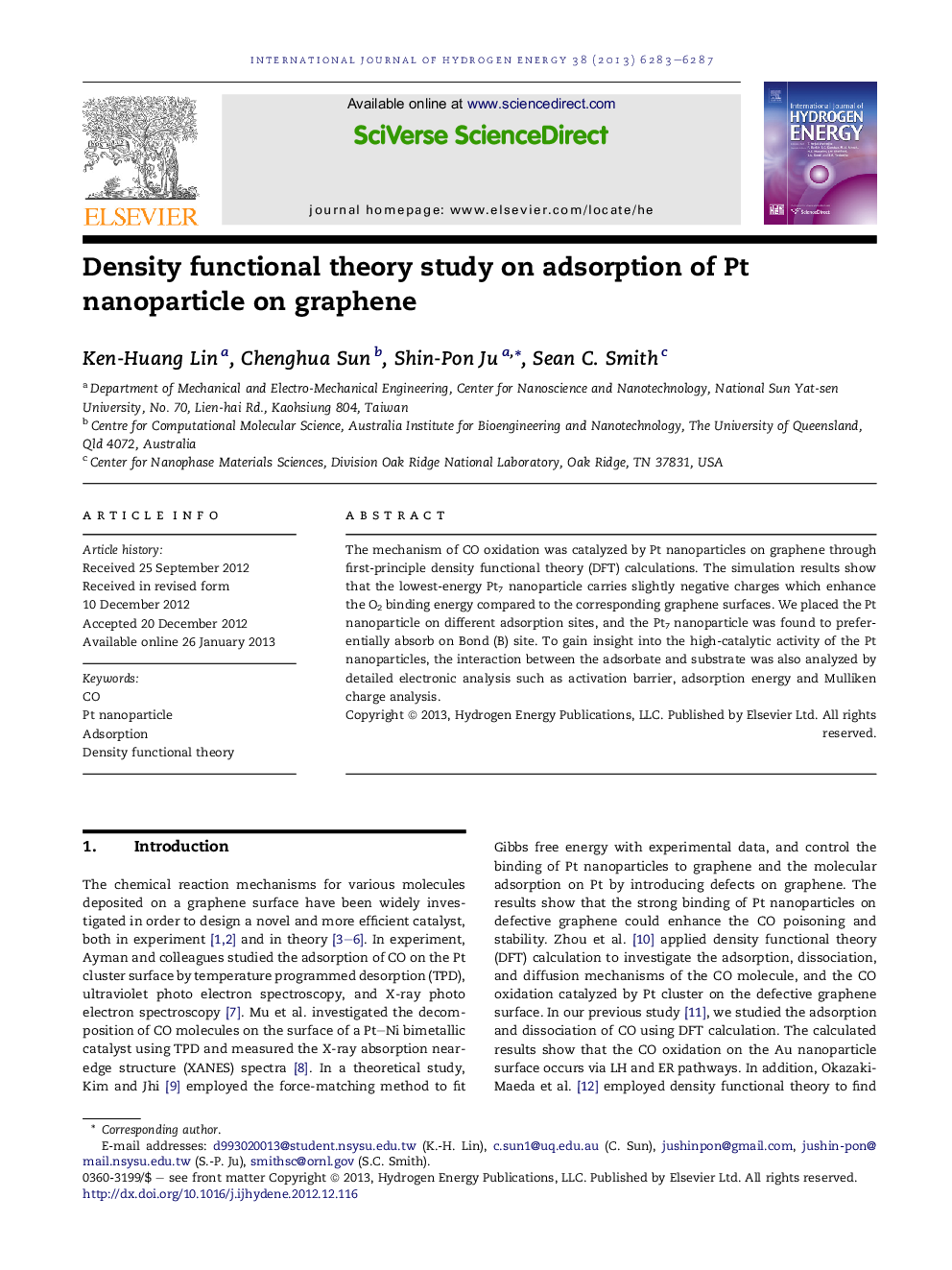| Article ID | Journal | Published Year | Pages | File Type |
|---|---|---|---|---|
| 1281752 | International Journal of Hydrogen Energy | 2013 | 5 Pages |
The mechanism of CO oxidation was catalyzed by Pt nanoparticles on graphene through first-principle density functional theory (DFT) calculations. The simulation results show that the lowest-energy Pt7 nanoparticle carries slightly negative charges which enhance the O2 binding energy compared to the corresponding graphene surfaces. We placed the Pt nanoparticle on different adsorption sites, and the Pt7 nanoparticle was found to preferentially absorb on Bond (B) site. To gain insight into the high-catalytic activity of the Pt nanoparticles, the interaction between the adsorbate and substrate was also analyzed by detailed electronic analysis such as activation barrier, adsorption energy and Mulliken charge analysis.
► The ground-state Pt nanoparticles are obtained by basin-hopping method. ► We employ DFT to study the deposition site effect on the bond length of O–O and C–O and the adsorption energy. ► The dissociation of O2 molecule on the most favorable adsorption site of graphene surface is investigated. ► We report the nucleophilic of Pt and electrophilic of O2 and O atoms in calculation results. ► The graphene affect the desorption and dissociation for the adsorbate.
